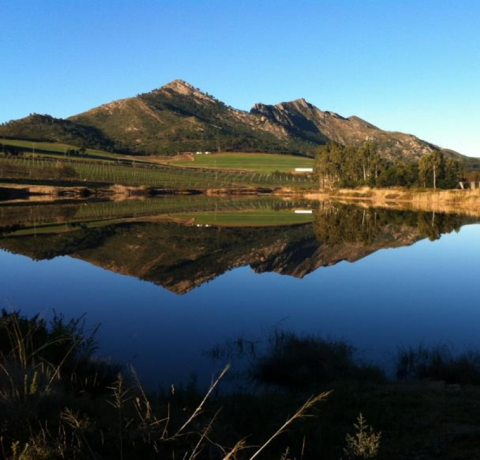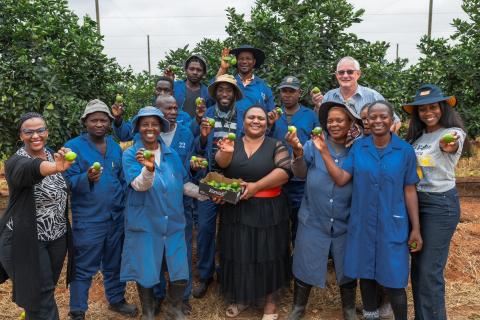Partnership between South African Breweries and WWF South Africa pays dividends for water security
George Mayor and MEC to visit hop-growing region to review progress of 7-step initiative
30 September 2021: Due to its unique hydrological and geographical features, the South-Western Cape area of George, South Africa, is currently the only region on the continent that is suitable for growing hops – a vital ingredient in the water-intensive process of brewing beer.
The effects of climate change including changing rainfall patterns, fluctuating, and rising temperatures, and a growing demand from agriculture and urban development are putting increased pressure on water availability in the George region.
For the past decade, South African Breweries (SAB) has partnered with the World Wide Fund for Nature South Africa in implementing a 7-step process to address water security in this high risk area.
On Thursday, 30 September 2021, George Mayor and MEC visited the site of the George Ecosystem Restoration for Watershed Health & Replenishment initiative to observe the progress of the project.
The 7-step George Ecosystem Restoration for Watershed Health & Replenishment initiative focuses on convening stakeholders, identifying specific local water challenges and potential solutions, implementing agreed solutions with governance and financing mechanisms in place, communicating progress, and measuring impact.
Among the project highlights are:
- Water saved:estimated to be around 9 billion litres per year, based on total clearing of invasive alien vegetation
- Active restoration: new restoration techniques piloted on 20 hectares of riparian land, proving that the local fynbos naturally restores itself when enabled to do so
- Community impact:an estimated 36 000 person-days of employment created
“As the world’s leading brewer, SAB is committed to being a part of the solution to the growing water challenges across our communities and supply chain. Our goal is that by 2025, 100% of our communities in high-stress areas will have measurably improved water availability and quality,” said Josh Hammann, Director at SAB Agri Development.
In addition to the threat that climate change poses on the water supply in George, the presence of non-native vegetation in the Waboomskraal and Herold catchments represents a major challenge to water security in the region. Several options were considered to improve water availability in the local context, such as shifting on-farm water use practices and improving infrastructure by fixing leaks and desilting dams. While these strategies are important, the team chose to focus its efforts on the removal of invasive non-native vegetation because of the significant potential benefit to businesses, local communities, and ecosystems.
As Hammann explains: “We know there is no single, one-size-fits all solution to building water resilience and security. Our solution is multi-faceted because the problem is multi-faceted. There is a significant social imperative that we aim to tackle with our watershed management process, and this includes job creation for the surrounding communities. In addition to implementing green infrastructure, this project has employed, trained, and equipped local people and farmers to protect, conserve, and steward their watershed.”
The impact of this initiative is measurable, and in the past decade SAB provided around 33% of the total finding for the relevant projects which went on to achieve important milestones. For example, a substantial amount of invasive species were cleared from the area, covering 1275 hectares of initial cleaning as well as 200 hectares with two initial clearings due to fire regrowth, and 1550 hectares of follow-up clearing (since some hectares of initial clearing have undergone more than one follow-up cleaning).
Samir Randera-Rees, Programme Manager: Water Source Areas with WWF South Africa, comments: “We thank SAB for 10 years of working together and commend them for their commitment to understanding and managing water risks in their supply chain, all started at a time when it wasn’t as widely accepted to do so as today. The work we’ve done together has helped us develop a model for collaborative solutions in our catchments that deliver water replenishment and create employment and small business opportunities. Investing in ecological infrastructure is critical in securing a water future for SA and this is indeed a great milestone to celebrate.”
Hamman concludes: “We’ll continuing to promote and encourage water stewardship from local landowners and stakeholders in George, South Africa. Through our actions, we are optimising water use efficiency for hops farms and thus helping to build a more climate-resilient future in the region.”
ENDS



